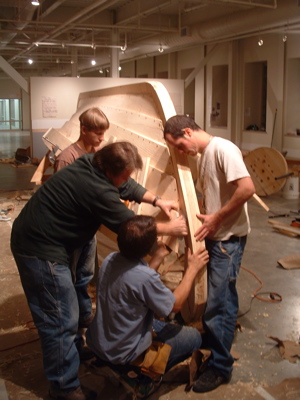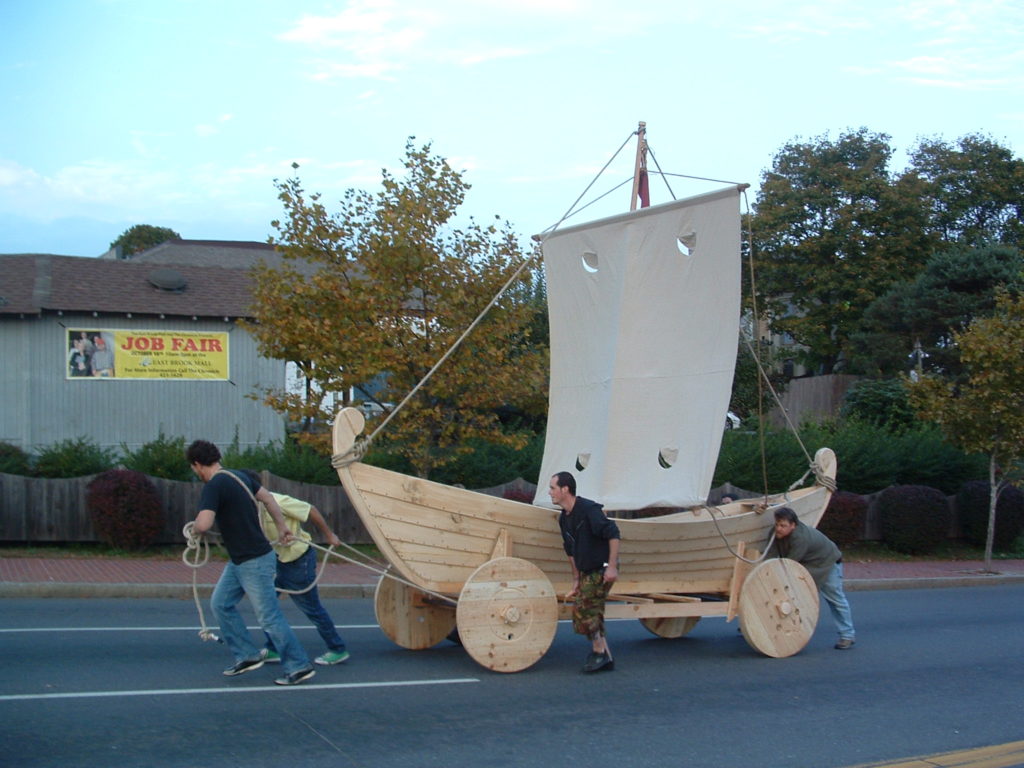
This was a project I organized with Ted Efremoff. We built this boat in Willimantic, Connecticut, in three weeks. It is a wooden lapstrake canoe with a canvas sail. It was built with the help and participation of about 100 people from the local area.
Several people got so involved that it really became a team and community-building project. The guys in this picture (Sean, Pat and Fred) worked long days with us, contributed ideas and talents, and generally took group ownership over the work. It was unexpected for that to happen, and wonderful.
We had set up the gallery as an open workshop. We got tools and materials together and established hours that anyone could come in off the street and help us figure out how to build this thing. The response was impressive, due in part to some excellent press coverage by Brenda Sullivan from the Broadcaster. We didn’t have any experience building boats before we started, but somehow through trial and error we figured it out together.
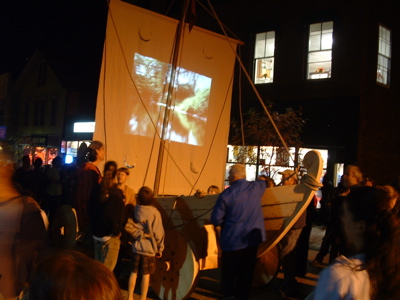
Our boat debuted at the local Third Thursday Street Festival on October 19. We had built a cart to haul it on, and a bunch of us pulled it through the street. After dark, there was a video projected on the sail of the Willimantic River. The river runs parallel to Main Street, where we were walking, and is seen by many as an important and underused feature of the town. Willimantic is a classic old New England mill town, down on its luck. Our project was in part striving to create a symbol and a focus for people to help build community and direct attention to the resources at hand.
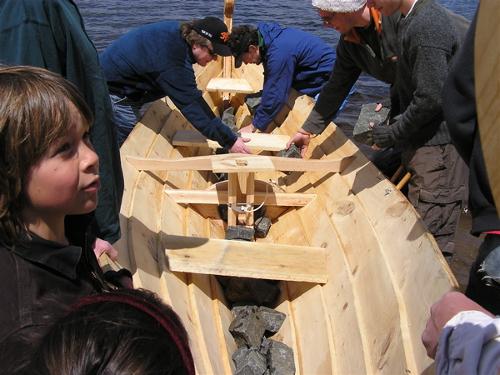
At first, the boat was much too light and didn’t sit right in the water, so we filled the bottom with some rocks that happened to be ready and waiting for us there by the shore. This ballast corrected the problem beautifully and it made us feel like we were using the old ways.
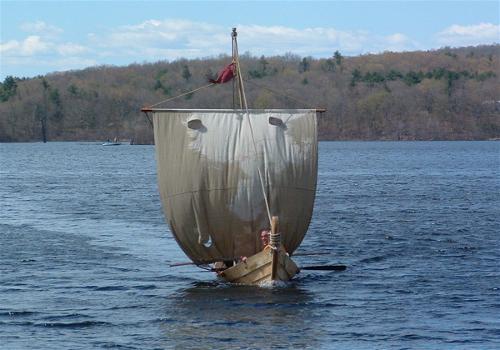
We took the boat on a trip down the Connecticut River in June of 2008, spreading Legends of Willimantic as we went.
Some folks were not available of course, but Fred Rivard, the historical reenactment enthusiast, and Pat Sold, the stencil t-shirt artist from New Jersey, came along. Johnnie Walker and his family, and my brother Brendan McMullan joined us for parts of the trip too. Despite some bad sunburns we had a great time, camping along the river, telling stories, and feeling free.
We made a pretty lengthy video during and after our trip documenting some of the legends we made up, imagined alternative histories of Willimantic, and such. Here it is broken up into four parts for episodic viewing.

Ultimately the boat became a sculpture at the I-Park Foundation, an artist’s residency program, land-based sculpture park, and alternative cemetery in East Haddam, Connecticut. Ted and I worked with James Holland and Johnnie Walker to brand a text into the sides of the boat, explaining the adventures we’d had with it. Then, we cut away the bottom of the boat, and planted a white pine inside it, to symbolically replace the tree that had been cut and milled for the planking.

Finally, we landscaped the area around our boat to create a fire pit and stone field, trying to make the site inviting as a place to sit and share stories. An invitation to use the space for storytelling was also branded into the side of the boat. It is our hope that the site will be used by residents and visitors for years to come, as the tree matures and the boat gradually decays back into the landscape.
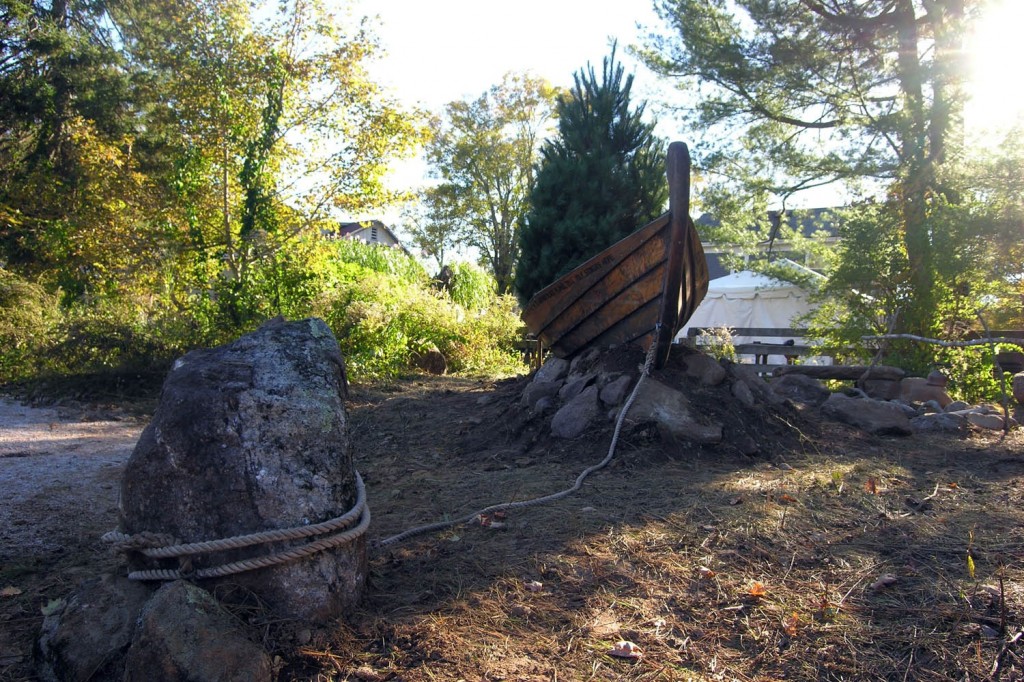
I made a new set of woodblock prints around the time we were working on installing the boat at I-Park, thinking about the life of a project, the many lives it touches and connects, and how it can be sad when it comes to an end. In the context of I-Park’s Thanatopolis, a proposed alternative cemetery, the leaving of the boat was like a burial rite for our project; a project that had been so much about action and adventure, now finally coming to rest.
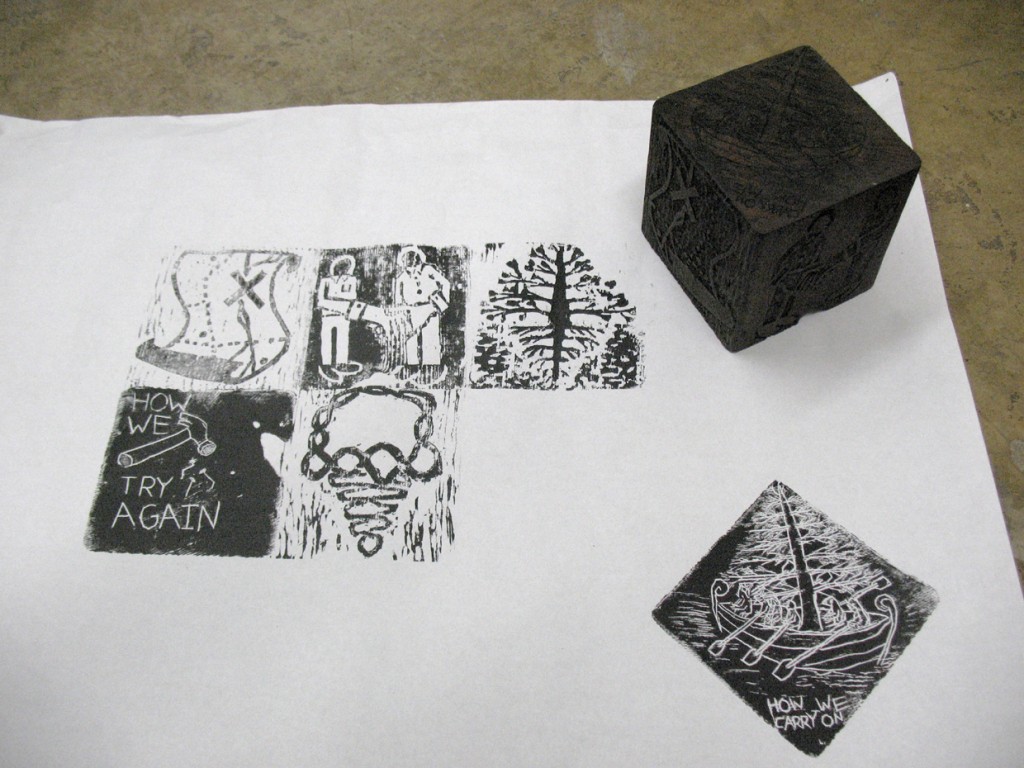
Later, I made a watercolor painting of the boat in the style of an illuminated manuscript, with a stylized tree for a mast, sailing over the ocean, with a varied crew of friends. I wrote the text with oak gall ink that I made myself, and gold leafed the tree trunk. This painting was part of my residency work at the Center for Book Arts and it was exhibited there in 2012.

